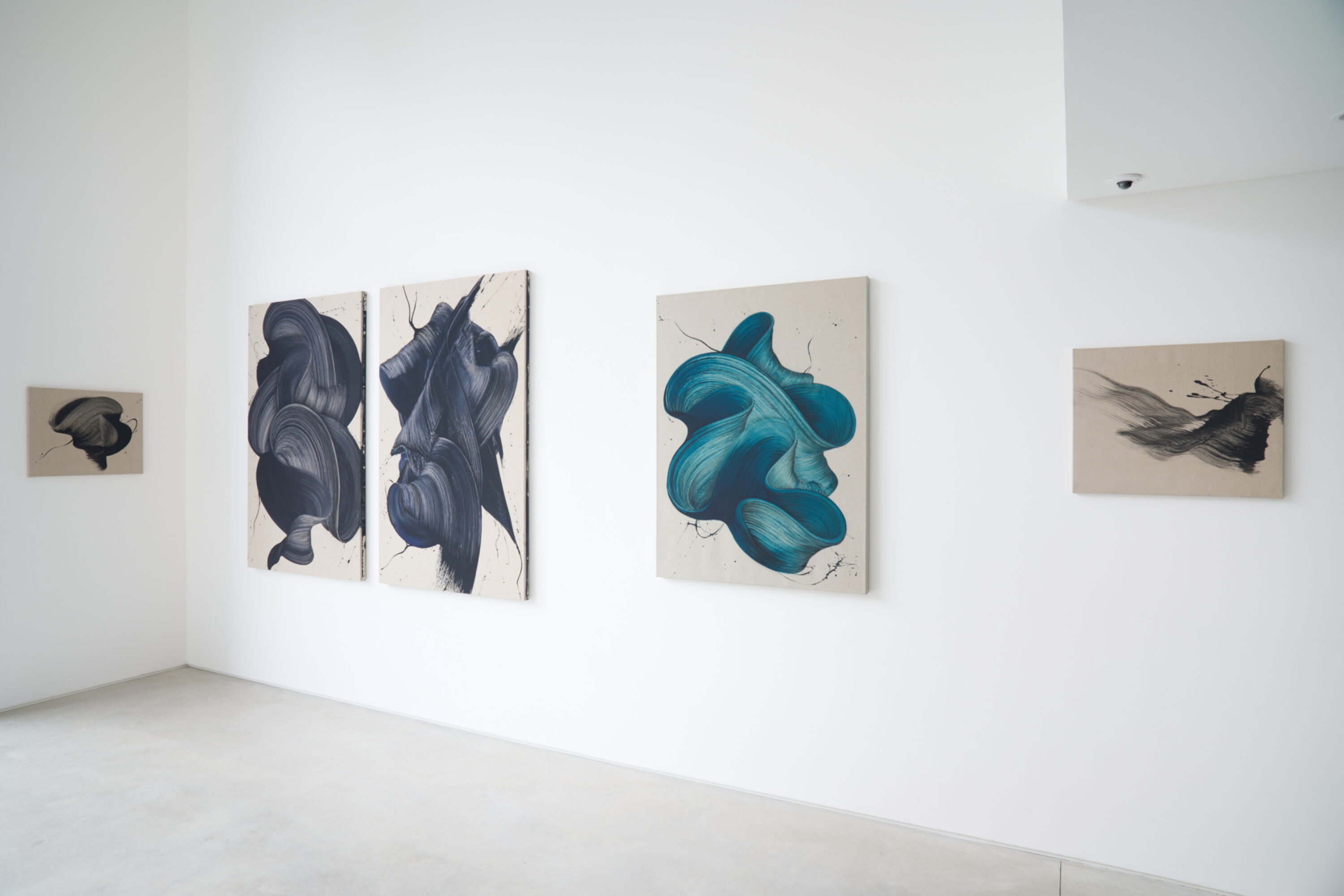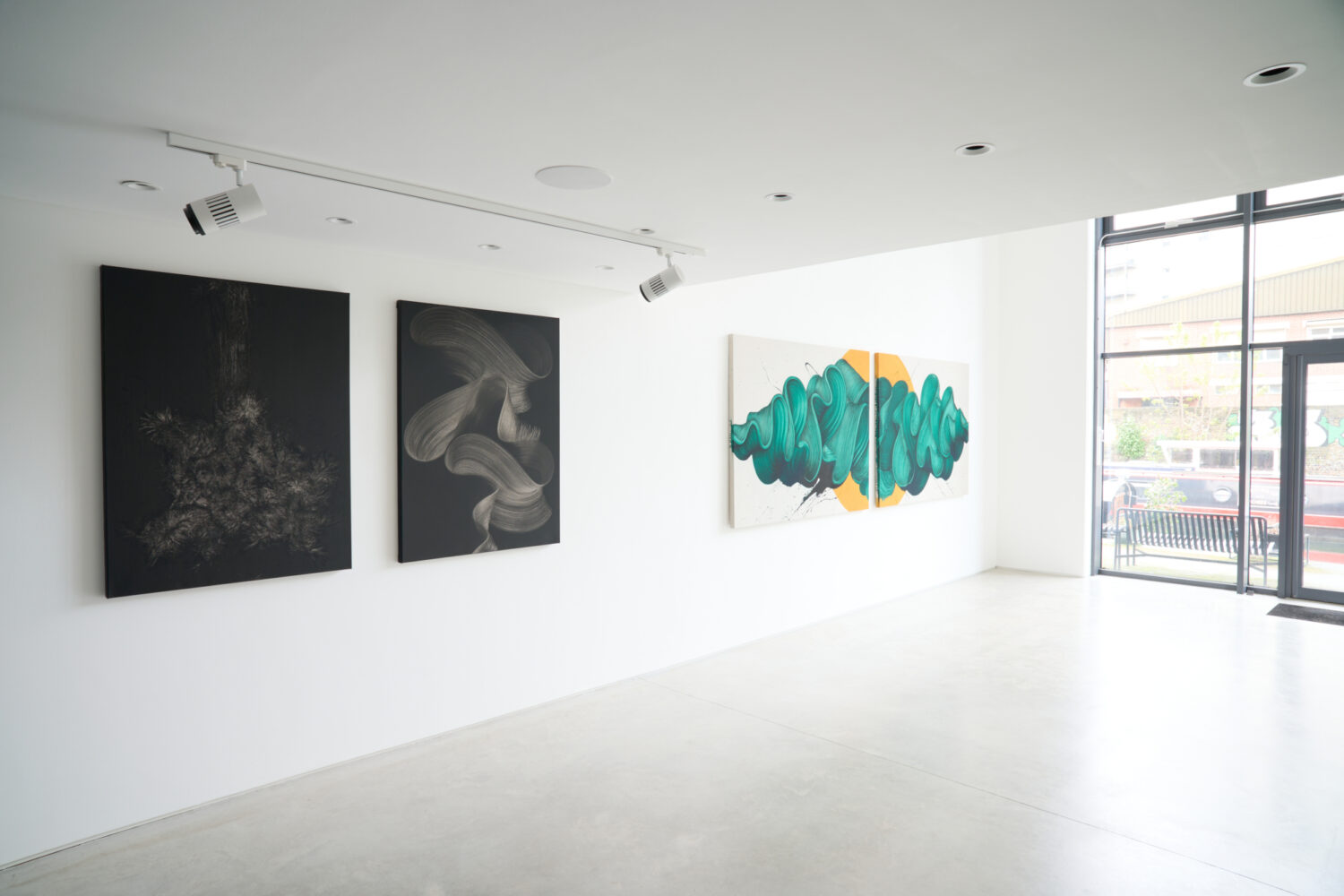There’s a quiet intensity to Kostas Papakostas’ work. It’s layered with instinct, control, and the deliberate act of letting go. For In Flux, his first solo with Hang-Up, he’s created a body of work that feels alive in the moment.
The canvases are placed on the floor, each mark made in response to the one before, with no fixed outcome in mind. In this interview, Kostas talks about painting as a negotiation — with himself, with the materials, and with a world that’s constantly shifting. The result is a raw, physical practice that mirrors the change and uncertainty happening all around us.
KP: In Flux speaks to a state of continuous motion and transformation, a refusal of final forms or fixed identities. As an artist, I’m interested in motion and instability as a creative force. My process explores that instability through gestural mark-making and the tension between control and letting go.
On a larger scale, the title also reflects the social and political changes happening right now. We’re seeing the erosion of systems once thought to be stable, and with that comes both disorientation and possibility.
I think of the title as an invitation to sit with that tension, to recognise that transformation is not linear or clean but messy and ongoing. In both art and life, flux is a space where new ideas and new structures can begin to emerge. There’s real hope in that.
That’s a hard one. I see this entire body of work as one piece made up of different fragments. Each painting supports the others and carries equal weight, so it’s difficult to single one out. But I’d say pieces like Surrender, Unselfed, and Wisp of Time are opening up a space that still feels unfamiliar and full of possibility. There is something in them that I would like to explore more in the future.
Starting a canvas is always the most delicate part. There’s a strange tension between intention and letting go and in order to get into that zone I need to be fully present and at the same time fully absent, if that makes sense.
I don’t work from sketches. My process is intuitive and visceral. Once I’m in that zone, the painting starts to unfold on its own terms. I’m guiding it but also listening to what it wants to become. I would say that a canvas begins with a conversation.
Of course, as I mentioned earlier, my surroundings and the current social and political events have a big impact on how I think while creating this series. Living through times of change naturally shapes how I see transformation and instability. In Flux isn’t just about personal change but about the bigger shifts happening all around us.
Right now art can remind us that transformation is ongoing and that it can lead to something more real and meaningful.
The process is definitely internal. I make what I need to make. But as a professional artist, it’s impossible not to think about the viewer at some point. After all, the real conversation begins between the painting and the viewer after the piece leaves my studio.. But there’s a big difference between thinking about the viewer and trying to please them. I have to be true to myself and trust that the right people will connect with my work.
Being an artist is a never ending questioning process. It’s about never allowing yourself to get too comfortable and always pushing into the unknown. That ongoing search is what makes the work meaningful but it can also be emotionally and mentally exhausting. There are moments of doubt, periods when nothing flows and times when I wonder if it’s all working. But I’ve come to accept that this is part of the process, maybe even the heart of it.
It keeps the work honest and it keeps me moving. The challenge is learning how to stay with that tension without letting it take over.
I think it’s not so much me but the painting that decides when it’s finished. There’s a moment when it goes quiet and it stops pulling me in. If I added anything after that, it would feel like fluff. It would take something away from it. That’s when I know it’s time to let it go.
I want visitors to feel the raw energy of each piece, the urgency and intensity of each brushstroke and the tension between losing and regaining control.
The work embodies an ever-evolving movement where transformation is not a single moment but an ongoing state of being.
I hope viewers sense the power of that transformation and the dynamic energy of being in flux and that they bring their own experiences to it, finding their own meaning within the constant motion of change.














